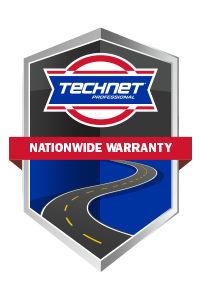Car Repair by Computer
Medford Mail Tribune, 1999
by Mark Freeman
Mechanics such as Bob Thomas have toolboxes that resemble something more like you’d see on “The Jetsons” than on “Dukes of Hazzard” reruns. Lab scopes, laser scan tools and other computer diagnostic equipment are used to ferret out engine trouble by comparing mathematical readings with charts of numbers in auto-repair manuals.
“It’s not black tape and bailing wire any more,” Thomas says. “Now,” he says, “the joke is that you go through all the diagnostics and the manual says, “replace with known good ECU.” ECU [refers to] the on-board computers in newer model cars, highlighting just how high-tech automotive repair work has come in the past 20 years — and providing a glimpse of where it’s going.
Independent repair shops such as Thomas Automotive in Medford now look more like science labs than the old havens for grease monkeys to dive under hoods with wrenches and screwdrivers and keep cars road-worthy. The world of auto mechanics is driving forward as well. A trade once steeped in hands-on practice has become one that now leans just as heavily on math, science and computer skills.
“Years ago, you could pretty much learn the industry hands-on,” says Chris Simper, an automotive instructor at Rogue Community College in Grants Pass. “Now, you just can’t learn the stuff by osmosis. If you don’t have some specific training, you won’t get it.”
Consider that a decade ago, most cars used carburetors similar to pre-World War II cars. Now, computer fuel-injection systems and sophisticated emission controls contain dozens of sensors and other doodads.
“Some new Cadillacs”, Simper says, “sport 18 on-board computers that can conduct 40 million calculations per second.”
But that’s nothing compared to other features creeping into cars in recent years:
- Holograms that display speedometer images on windshields.
- Telemetric systems and computer hookups with satellites that provide directions and other navigational material electronically.
- Computers that allow satellites to unlock cars whose owners have locked their keys inside, even scan the vehicle to test emissions as it travels down the highway.
- Infrared technology that scans ahead of a car’s headlights to search for deer, people or other objects on or near the road. A computer beams an image of the roadside deer onto the windshield in the line of sight between the deer and driver.
“We’re definitely seeing some pretty radical things,” Simper says.
And automotive technicians are scurrying to keep up.
“Schools like Rogue Community College offer one- and two-year courses in mechanics that are heavily weighted in trigonometry, algebra, chemistry and electrical theory — many of which are college-level courses”, Simper says.
And that’s a big change for mechanics such as Kandace Boehm, a 44-year-old Shady Cove woman who works seasonally at a Shady Cove shop and takes courses at RCC when she can. When she began her RCC training two years ago, she had barely remembered her high school math or science. She had never worked on a computer. But she has since brought her math and computer skills in line with the basic shade-tree mechanic skills of her youth.
“It’s so completely different now than what I used to do, working on carburetors or changing water pumps,” Boehm says. “You have to know how the different electronics and sensors all work so you can keep vehicles running.”
But it’s not all roses. Older, seasoned auto technicians are either forced to scramble to keep up, or get out of the way.
“A tech who used to be good 10-15 years ago is dead in the water if he’s not re-schooled or knows ways to beat the computer,” Thomas says.
High-tech skills also bring a demand for pricey high-tech equipment — so pricey that small shop owners have a tough time keeping up.
Independent shops such as Thomas Automotive are becoming more and more rare.
“The average repair shop will have to spend $25,000-$45,000 a year in equipment to keep up with the manufacturers,” Thomas says. “In the next 10-15 years, if technology keeps going the way it is, the only way you can get your car fixed is to take it to a dealership — unless the small independents can keep up,” Thomas says.




